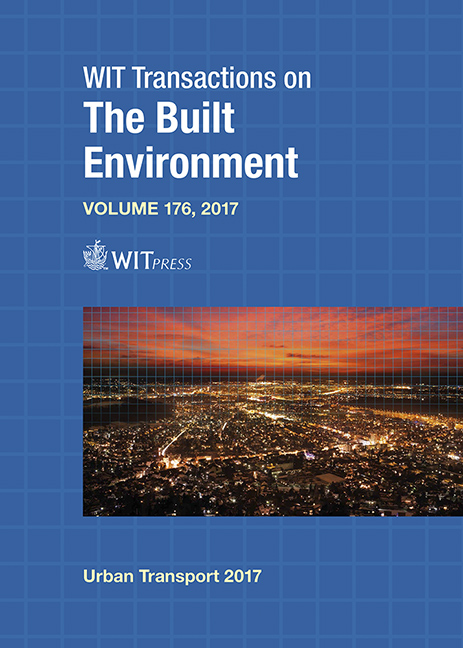PROPOSED CRITERIA TO DETERMINE TYPICAL VEHICULAR DRIVING CYCLES USING MINIMUM WEIGHTED DIFFERENCES
Price
Free (open access)
Transaction
Volume
176
Pages
9
Page Range
329 - 337
Published
2017
Size
717 kb
Paper DOI
10.2495/UT170281
Copyright
WIT Press
Author(s)
DANIEL CORDERO-MORENO, DANILO DAVALOS, MATEO COELLO, ROBERT ROCKWOOD
Abstract
Vehicular driving cycles are speed vs. time diagrams, which describe typical driving patterns within a given city or region. These diagrams are currently used to evaluate fuel consumption, exhaust emissions and to configure the powertrain of new vehicles, or vehicles already in use. For the latter application, it is necessary to determine a local driving cycle, which includes an altitude profile. There is no standard methodology for establishing a driving cycle. One of the currently used techniques is the analysis of a sample of trips, represented by specific parameters such as average speed, maximum acceleration, and idling time, among others, and then apply minimum weighted differences to obtain the typical driving cycle. This work proposes a methodology to select these parameters and their weights. This proposed methodology evaluates the energy demanded by the vehicle to overcome drag force (Fd), rolling resistance (Rx), inertia (Ri) and resistance due to road gradient (Rg). This study was performed in Cuenca, Ecuador, using a taxi to collect 512 trips in 30 days of tests. Finally a typical driving cycle, which includes an altitude profile was obtained.
Keywords
driving cycles, minimum weighted differences, driving parameters





